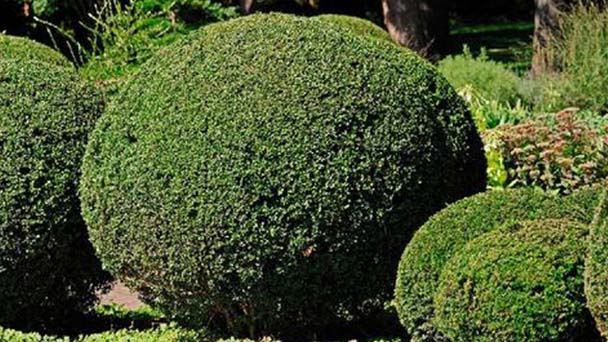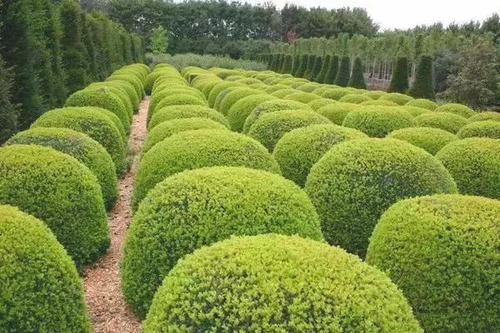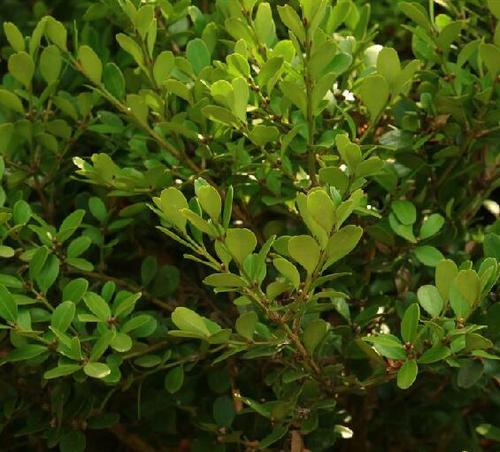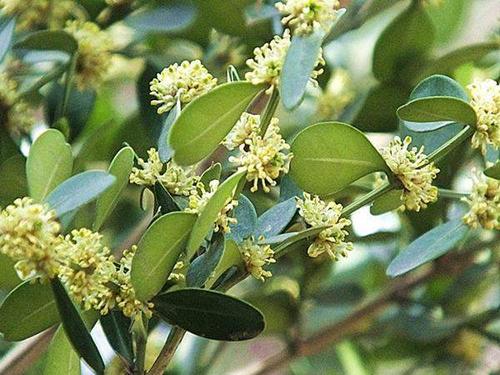Buxus sempervirens (boxwood) profile
Written by Maggie
Mar 29 2021

Buxus sempervirens, also known as boxwood, is an evergreen shrub or small tree of the genus Boxwood in the boxaceae family, with a height of up to 6 m and a maximum of 9 m. Branchlets are dense, tetragonal, and pilose. Leaves are elliptic to ovate-oblong, widest part at middle or below middle, 1.5-3 cm long, apex obtuse or concave, entire, surface dark green, glossy, back green-white; Petiole is very short, hairy. Flowers fascicled leaf axils, light green, anthers yellow. Capsule is a tripod shape, ripe yellow-brown.
Buxus sempervirens is native to Southern Europe, North Africa and West Asia; It is widely cultivated in the Yangtze River valley of China and its south regions. North China, northwest gardens are cultivated. Buxus sempervirens likes half shade, like warm, humid climate, cold resistance. Buxus sempervirens likes fertile, wet, well drained soil.
Buxus sempervirens has Dense leaves, thick and glossy leaves, and can be used as hedges and arranged into flower beds or bonsai, can also be planted alone, planted in the lawn, around the building, the roadside, or decorated with rocks. Buxus sempervirens has strong resistance to a variety of toxic gases, can purify the air, and is an important material for greening factories and mines.
Buxus sempervirens picture

Buxus sempervirens morphological characteristics:
Buxus sempervirens is an evergreen shrub or small tree, up to 6m high, up to 9m. Branchlets are dense, tetragonal, and pilose. Leaves are elliptic to ovate-oblong, widest at middle and below middle, 1.5 -- 3 (4) cm long, apex obtuse or concave, entire, surface dark green, glossy, back green-white, petiole very short, hairy. Flowers are fascicled leaf axils, light green, anthers yellow. Capsule is a tripod, yellowish brown.
Buxus sempervirens distribution and habits
Buxus sempervirens is native to Southern Europe, North Africa and West Asia. Buxus sempervirens is resistant to negative species, unfavorable direct sunlight, like warm and humid climate. Buxus sempervirens is suitable for well - drained, deep, fertile soil growth. Buxus sempervirens has drought resistance, avoiding low-lying water, cold resistance.
Buxus sempervirens propagation
Buxus sempervirens generally uses cuttage propagation method to propagate seedlings. More because cuttings are easy to survive, in spring and summer with soft wood cuttings, autumn with semi-soft wood inserted, winter can also use hard wood greenhouse cuttings are very good, the use of plant hormone treatment of roots faster and better, commonly used hormone naphthalene acetic acid 500 mg/kg + borax, has been done in various species of test results are very good.

Buxus sempervirens cultivation
In the arrival of spring that is, in the middle of March to remove the cold buried soil or remove the wind barrier, seedling leaf color will have changes, through the wintering brown into green, its vitality has been restored, you can irrigate and dig seedlings transplantation. Generally for bed transfer, each bed 3 rows, row spacing 50 cm, plant spacing 20 cm, transplanting per mu of about 5000 Buxus sempervirens. Cultivating again a year can be for gardening. Seeding of Buxus sempervirens is too complicated, which is rarely used in major nurseries in Beijing.
Prevention of diseases and pests of Buxus sempervirens
Boxwood silk borer
Harm symptoms: 3 generations occur in 1 year, overwintering with young larvae sticking to leaves and bracts, from the end of March to the beginning of April began to harm, in the new leaves on the spinneration of nibbling leaf edges or eating epidermis, so that the leaves were transparent film.
Prevention and control method: can use methylurea 1000 times liquid or trichlorfon 1000 times liquid spray.
Buxus sempervirens application
Ideal for garden hedges or on the edge of flower beds, can also be on the lawn alone, in clumps and on the roadside planting. Adorn the rocks, or for potted plants, bonsai, used for indoor greening.

Latest Updated
- Benefits of Bugleweed - 7 Science-backed Health Benefits
- Bugleweed Dangers & Side Effects - Is It Poisonous?
- How to Plant Evergreen Trees - What You Should Know
- When to Plant Evergreens - Grow Guide for Evergreen Trees
- 12 Wonderful Evergreen Shrubs for Your Garden
- 12 Popular Evergreen Plants with Pictures for Beginners
- When And How To Prune A Lilac Bush Like a Pro
- How to Grow & Care for Lilac Vine (Hardenbergia Violacea)
- Japanese Lilac Tree (Syringa Reticulata) Care & Propagation Guide
- Shumard Oak Pros and Cons - What to Know
Popular Articles
- Winter maintenance of Antirrhinum Majus
- How to Grow Terminalia Mantaly Tree
- How to Grow and Care for Crossostephium Chinense
- How to grow Antirrhinum Majus in spring
- Peristeria Elata (Dove Orchid) Profile: Info & Care Guide
- Underwatered Snake Plant (Sansevieria Trifasciata) - Signs And How To Fix
- How to Care for Brazilian Jasmine Plant (Mandevilla Sanderi)
- How to Grow & Care for Graptopetalum Purple Delight in Summer
- Rosa Chinensis (China Rose): Plant Growing & Care Tips
- How to Care for Baby Sun Rose (Aptenia Cordifolia)